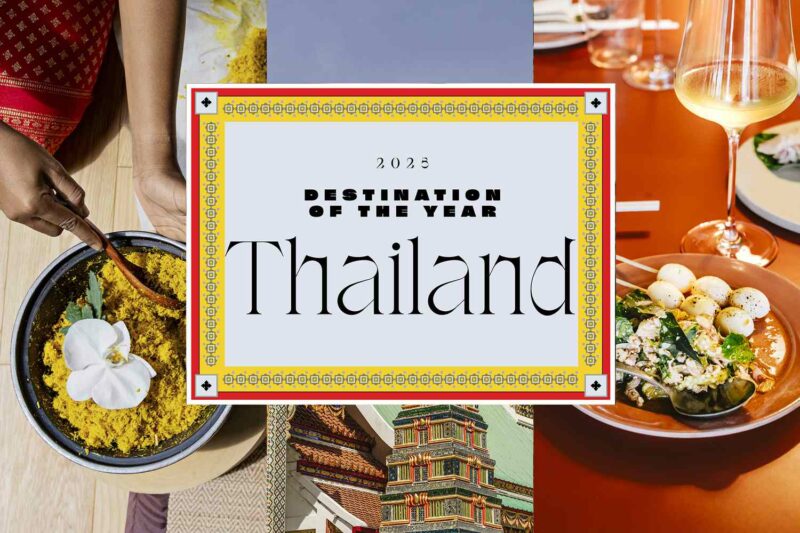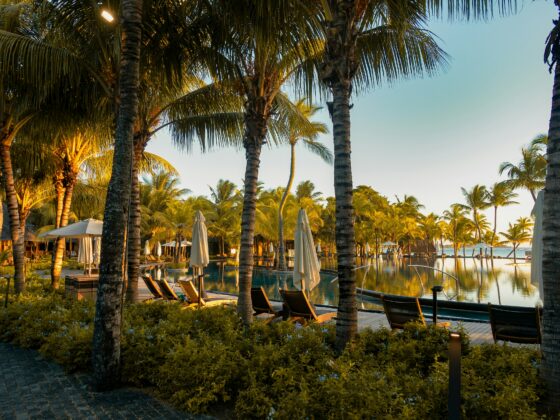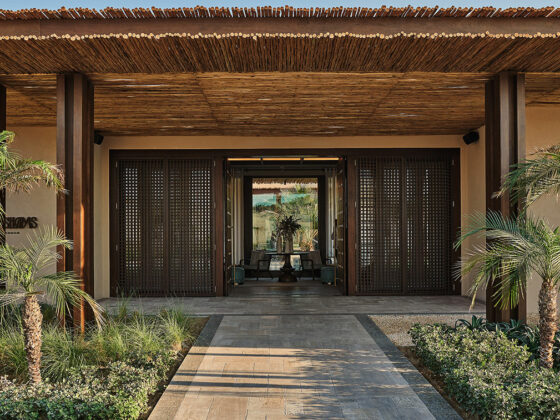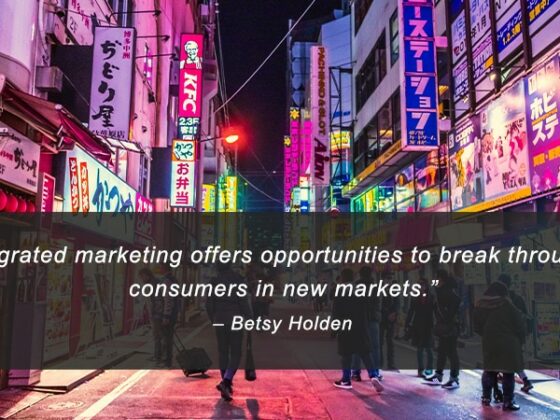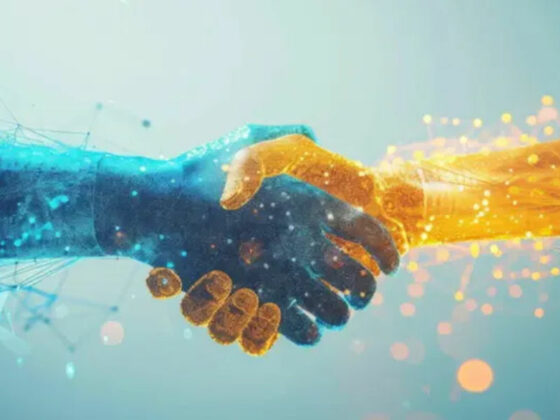Josiah:
L auren Phelps started her career in strategy consulting before working for investment firms and opening a new hotel in the heart of Silicon Valley a few years ago and running it as general manager. As she was doing all of this, she earned her MBA from Stanford University, so she has seen the world of technology and company growth from so many different angles. In this episode, we cover what she’s learned through this journey and gives you strategies that you can use for product development, experience, design and team alignment. You have a great phrase that you use of running your hotel like a startup or a technology product. Maybe just let’s define at a very high level what you mean by that. I wonder if we can go into the different components. Maybe we use Ameswell as an example of this philosophy. How would you describe this notion of running your hotel like a startup?
Lauren:
Absolutely, I think. For those of you in the tech world, I apologize if this is a little bit irally, but there’s a reason that these things are the tropes that they are For us. We’re an independent brand, fully independent, no associations building a BT book from scratch, scrappy. There had to be a scrappy, lean mentality Because we were independent. We had to find product market fit and we had to be radically experimental. What that meant was we had hypotheses. Those hypotheses began when the hotel was not even conceived, about what the market needed, what people there would want, what ADR that would support. All of that was modeled and borne out. The only thing you ever know about a model is that it’s going to be wrong. That’s the only guarantee in any model you build. However, the set of hypotheses the way I think about the revised role of a general manager in this environment is chief experiment officer. What it is that you’re testing, knowing how you’re going to test it, what the data will indicate, what success looks like, and then what you do when you know. That’s how you build a brand when the brand doesn’t exist.
Josiah:
I want to hear more about this because I think from a technology product perspective, you can release some code and you can try something, but when you’re in the physical built environment, there’s a lot of capital there there can be. I don’t know.
Lauren:
Hard to move stuff. Yeah, yeah, that’s literally nailed that.
Josiah:
You can’t do the same thing. So can you give an example of, maybe early on, how you thought about this product, fit mentality and how you were operating as this chief experiment officer?
Lauren:
Totally Well. I mean, you’re in marketing, so I think you’ll appreciate this. But where you do have the most flexibility and understanding your product market fit as a hotel is in the marketing. So you can adapt your keywords 30 times a day and you can see what hits. You do need to know how to interpret that data. It’s a lot of structural stuff. You need to have a meeting wherein you explain to the stakeholders at the hotel, and not just the sales team but the operators. Okay, here’s who we think the demographic for the hotel is. Here’s how we’re marketing. Here’s how it’s landing. Oh, actually we thought it was going to be mostly males from 20 to 28, 22 to 29. Actually, it’s really resonating with women from 32 to 40. Why? Okay, interesting question. Let’s do another hypothesis based on that. Oh, the F&B offering that we have here, that we’re marketing strongly, really appeals to that segment. Okay, what does that mean? How do we take that and convert it to room sales? And how do we sort of create this flywheel effect wherein the things that work for us continue to work for us and bring in more and more and more? And so that starts with a data orientation and a sort of willingness to try stuff, orientation, and you have to inculcate that in the staff and help them understand why all of this matters. We had a set of meetings. Our restaurant is called Roger it’s a received order given expect results which is from radio communications in various wars, in the Air Force, et cetera. And we had a whole set of meetings called who Is Roger and it was just various experiments. We ran about marketing the restaurant and we thought it would appeal to this segment. It actually turned out that locals in Mountain View and in the neighborhood we were located were, they skewed, slightly older. We came in with a full touchless contactless technology stack and the restaurant wasn’t what the customer wanted Fascinating.
Josiah:
So how did you? Were the initial round of experiments digital advertising and marketing, or what did that look like?
Lauren:
A lot of digital advertising and marketing, a lot of software partnerships with sort of well-negotiated out terms, which I think is another really tactical important thing to know. If you are going to try to run a startup, you need to have partners that are aligned with you. I mean, one of the things that we did that I loved is every software company we signed up to work at the hotel, to be part of our capital stack, front-facing or back-facing. We said we will be your best friends, we will test every new feature you want. In exchange, you have to get on the phone with us every week or every other week and we want to kind of influence your roadmap. We’re a great person for you to know us. One hotel, 255 rooms, and we’ll be your partners. We’ll be your beta testers. We’ll give you the real feedback. We’ll ask the customers and software companies need that and we needed good new software. So it was a great win-win partnership.
Josiah:
It feels like a lot of people overlook the power of looking at your technology providers as partners. I hear so much talk around vendors or things and it almost feels like it’s commoditized and there’s actually a really big difference between a high effectiveness software partner and one that is just checking the boxes.
Lauren:
Totally Huge difference, huge difference on a day-to-day. And in order to see that difference, you do have to be tuned into what the data is telling you and evangelizing that mindset throughout the entire hotel, because that data can be collected through a variety of standardized surveys or it can be collected. We had a closed-down circle at the end of every restaurant shift where it was like, what did you hear today? And we basically made, for better or worse, sort of a word cloud. But I mean that’s where people are very candid. It’s sort of like you get the barbell effect in the surveys of people who loved it and people who hated it. But the people who make the off-handed comments, like I mean we got one that was like you know, your watercrafts are too small, like I need more water, and it was like well, this is the easiest way to delight a customer that I’ve ever seen. We just need bigger crafts.
Josiah:
That’s so good, and so just to kind of play this back to you so you kind of have this. you’re approaching it with this notion of being a chief experiment officer. You’re looking at, you know, kind of starting with the people that you’re looking to engage in, the messaging and the offering that you have for them. You touched a little bit on the demographics. We thought it was going to be this group. It actually ended up being this group, and then the tests, I imagine, are kind of like how you’re going to reach them, what you’re going to say to them. And then once they arrive on your property, how they engage with you.
Lauren:
Exactly, and then?
Josiah:
you’re collecting feedback not only through the traditional surveys or online reviews, but the more qualitative. You know asking your staff. What are people saying?
Lauren:
Totally Sentiment analysis, all of that. And I think the other thing too is like, in order to understand how all of that works together, you need to have a very strong customer journey, and we did customer journey mapping. I mean I did. I don’t know that any way. The hotel cared about it at the beginning, which is totally fine. Like you know, to them it was PowerPoint, it was like Oval’s on a PowerPoint slide. It was like we start here, the system we touch is this and. But then once you see how it all goes together and how the handoff sort of between every department really need to be nailed and how the consistency really lives there, like that was a huge unlock for us. And I mean that’s another thing we just stole from Tech and Silicon Valley.
Josiah:
They’re actually hard to put together, though, oh they are. Those journey maps are how did you approach that process of creating that?
Lauren:
So we outsourced it to the employees, because one other thing I want to talk about here is like I think startups because they are, because they are mostly ideas based and they’re there, the value they offer is more theoretical. Like you have to create buy-in as much as you can, and so for employees we hired, we had them Build the customer journey map for us. Okay, you want to work here? Come stay with us, do the entire thing, fill this out for us, tell us where the clunky bits are, tell us what you wish was different, and what happens is it creates a great sense of, of participation, creates a really fun sense of like I am Helping to build something to be better in in the estimation that I think you know what do people want and my voice can really be heard here. I can make outsize impact on this product just by sharing my opinion and my opinion matters here like that was a great way we created buy-in from the ground up at that hotel and and it helps it be more how do I say this more agile. Oh god, I’m so sorry. I hate. It’s not a waterfall, it’s agile, but it does. Because if, when you have constant sort of streams of feedback in that way, both from guests and from employees, you get issues are raised faster, there’s a culture of sort of failing fast and pivoting and People get really bought into the smallest things. You know people, we had a huge like debate for a while about the robes that we wanted and half the staff wanted this kind and half the staff wanted the other kind and ultimately, is that gonna be the difference in ADR? Perhaps not, but it does help with morale and sort of like. What you say goes somewhere and it can result in an outcome for the guest and for yourself and that’s a cool feeling.
Josiah:
Yeah, oh, for sure I love it. So I guess you go through this whole experience design process. That the journey mapping and I guess I had the notion of the mission and the vision of the organization is something that fascinates me and it seems like you have Woven together all these threads throughout your career in terms of, you know, stepping into this operational role around. Maybe there’s a new way of doing things. I guess. How explicit were you at codifying that, that vision for your operating philosophy? Is it work?
Lauren:
Yeah, I mean, it’s hard because you have to do it every single day and I think you know folks on this podcast know better than anyone that in order for this to work it, it would be ideal if it were more technology enabled. I think you know you and I talked a little bit about this. But for everything to flow the right way, you need the data to be movable. It can’t be in silos, and there’s a lot of talk about, you know, are there APIs that can be built, and how do you get that data orientation down at the operating level, and how do you create better BI and better dashboarding? But I mean, when that doesn’t quite exist, the way you need it to, the way that you create consistency and experience, is by creating buy-in with the employees on what the brand means. And so for us, that meant we did a culture audit, an annual culture audit, which, if anyone needs a culture auditor, I have a great one. She’s amazing. What went into that? It was sort of so I’ll tell you. Let me read you our mission and vision and value. So our mission was to use technology to provide unique, sustainable, tailored experiences to our guests and empower our employees to make change while being their authentic selves. Our vision, which is our higher purpose Mission, is what we do every day. Vision is what our higher purpose is and our values are what principles guide us. So our vision is simultaneously creating not only a hub in the Mountain View community but a new standard for innovation and employee experience in American hospitality One hotel. So, yeah, we’re taking it by storm, guys. Values adaptable, productive, innovative, consistent, balanced, collaborative and, most importantly, assume best intent. Assume best intent from the guest, assume best intent from your peers, from your managers, from your owners. So that was how we created that and we audited it annually and we did that with everyone from the hotel. So it was a feedback gathering exercise of what makes this place special, what drives you about what we do, and that’s how we came up with that and we left I mean, of course, there was some hotly debated items there, but we left more aligned, more cohesive and more bought in and ready to do that work every day.
Josiah:
For me it feels very few people have defined the level of specificity that you did. Why are we here? And I very rarely hear people thinking about some area like technology and having a vision for technology and something that is compelling enough to rally people around but also, as you pointed out, get ownership in.
Lauren:
Totally, totally to feel participatory in and I think back to sort of a comment I made about my own career. But I think that is what sort of keeps you going when you’re tired or when things are really frustrating is like, what am I building and how is this? Like fifth bus run I’m making helping me do that, and like connecting the tactics to the strategy. It’s hard and you have to reinforce it every single day, but it’s so worth it because you just feel more fulfilled, or at least I do. I don’t wanna speak for everyone, but I loved that aspect of it and it gave meaning to some of the smaller things.
Josiah:
I love it. I wonder if we could touch a little bit on another component that is somewhat common in technology companies and that is incentive alignment, or think about equity, things like that. How did you think about it in the context of being a leader within this hotel and as you think about some of the opportunities we might have in hospitality?
Lauren:
Totally so. Incentive alignment and hospitality is so tricky because there are so many stakeholders and there’s good reasons for the multitude of stakeholders and then it’s also quite difficult to create incentive alignment across them because they don’t always have the same goals. I think we all know and have lived through the difficulty in employee retention, employee even just hiring, not just in hospitality, everywhere, but particularly felt in hospitality over the last two years, and I think okay, personal opinions here, obviously but part of the issue with retention is the treatment of labor as commodity, and so, especially for an independent brand, there is no such thing as a commodity, because everything you do is the brand standard. When you’re a brand of one, everything that’s done is the creation of a standard and experience, down to the foldover on the duvet, the relative sustainability of the practices, the soap I mean everything is the creation of an experience, and so you can’t treat it as a commodity, because you will have, if you don’t create buy-in at the employee level, you will have inconsistency, and inconsistency is the death of ADR. You cannot have inconsistency, and so the way that we worked on that Ameswell was really creating this culture of buy-in on. Everything you do is going to have leverage. Everything you do is part of creating a new playbook, a new way of doing things, and we want your thoughts and we want your feedback and we want to incorporate them. We had a roundtable every month with folks from the various departments on what could we be doing better, what are you hearing, what are you seeing? And filtering that feedback up and I think where this could go eventually and like personally would love to see where it could go is same as startup sort of equity and profit participation for folks who are taking a risk on a newer brand On it. The same way you’re taking a risk at a startup. You don’t know what’s going to happen. You’re excited to be along for the ride, you’re excited for the impact you’re going to make, but that’s what keeps people engaged. That’s my experience and so I mean I’d love to see a world where that’s more common as a method of doing business and I think we have endured this reckoning in labor and hospitality and I mean AI is going to cause an entirely new reckoning. That’s a different podcast, but I’m interested to see how we could borrow some of the models for incentive alignment, profit participation, bonuses, anything in hospitality in ways we have not.

